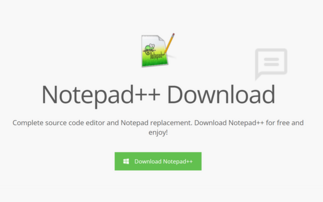
Creating blockchain-agnostic ecosystems is complex work, but web data collection can help - here's how!
We’re seeing a strong push toward enabling NFT-focused companies build blockchain-agnostic ecosystems, says Or Lenchner of Bright Data
The collection of different types of web data is extending to new spaces. From public social media channels to ESG to new financial destinations and more - there's a new web data trend emerging all the time. What we're seeing now is a strong push toward enabling NFT-focused companies to create blockchain-agnostic ecosystems and build review, ranking, and trend-tracking platforms. This is in addition to verifying token creator identities and collecting APIs to help creators scale their ‘dApps' and go-to-market in days instead of months.
It goes without saying that web data collection can help build these systems… but what if I told you it can also help you create your own NFT? It actually does, and here's how.
What are NFTs? Let's go back to the start
NFT stands for non-fungible token. The 'non-fungible' part is there to remind people that it is unique and cannot be replaced or replicated. It is essentially a unique digital token that exists on a specific blockchain that helps register and verify ownership of any given digitised item. Meanwhile, bitcoins are fungible, meaning you can trade one for another. However, a digital meme, work of art, emoji, and so on, are unique, in that you cannot trade one for a similar one. Those one-of-a-kind characteristics are what gave birth to many of today's successful NFTs.
At a very high level, most NFTs are part of the Ethereum blockchain, but other blockchains can implement their own versions of NFTs. This is a distinction worth making when you look at some NFT creations out there such as ‘Nyan Cat' or ‘Bored Ape'. These NFTs have made a serious cultural impact, to the point of classifying them as fine-art collecting, only in digital form.
And people go to great lengths to pay for such NFTs, too. One person previously paid over US$390,000 for a 50-second video of artist Grimes, while another paid just shy of US$6.6 million for a digital collage assembled by digital artist Beeple, which was auctioned at Christie's. In fact, one of the first pieces of ‘GIF art' that was registered as an NFT was around ten years ago when the artist Chris Torres first sold ‘Nyan Cat', for a mind-boggling US$600,000. So, clearly, NFTs are considered an investment in the now and the future.
The role of data tech in the NFT space
One primary use focuses on enabling the flow of NFTs. Though the vast majority of NFTs are Ethereum-based, there are still a wide variety of blockchains on which different NFTs are recorded, making it exceedingly hard for those who trade in them to operate across the board. By crawling major crypto websites for industry trends and digital currency rates, companies can create a blockchain-agnostic NFT ecosystem.
You can also provide reviews, rankings and trends on NFTs. This company has developed an NFT platform where they review top NFT projects, trends, and artists as well as provide consumer-generated rankings. They use Web Unlocking data technology to collect publicly available information (e.g., likes, Tweets, followers, etc…) regarding new NFT projects from various industry websites, social media platforms, and marketplaces such as Discord, Instagram, Facebook, Twitter, OpenSea, Binance and others.
There's also the option of verifying NFTs. For example, we, at Bright Data, work with a company that uses its website as a launchpad and marketplace for NFT collections, where artists, athletes, and celebrities can create their NFT collections using web-native tools that enable users to sell them to fans and followers on their marketplace. They use data collectors to avoid potential impersonations - collecting information that helps them identify intellectual property infringements. Additionally, they verify NFT creator identities by requiring them to connect one of their social accounts: Instagram, Twitter, YouTube, etc.
Public web data collection also allows NFT creators to go-to-market in days rather than months, and here's how: Customers utilise their software and proprietary APIs to build and scale their ‘dApps' without the cost and complexity of accomplishing this in-house. This type of tool is quick, robust, and easily scalable on top of 'Web3' infrastructure, making it possible for NFT creators to go-to-market in days instead of months. They and others tap into intelligent web data tools that can collect the NFT APIs necessary for their solution's unique capabilities.
Putting it into practice - what does the future hold?
We have recently partnered with innovative YouTuber Yannic Kilcher on his quest to create an artificial intelligence (AI) tool that can generate infinite NFTs, in particular ‘Bored Apes'. Besides being a big fan of this NFT digital art, the process behind it and how web data collection enables it to function intelligently is truly amazing. The technique that enables it is called ‘generative adversarial network' or GAN for short. It's the same methodology that powers websites such as This Person Does Not Exist and This Chair Does Not Exist.
Now, without going into much ‘geeky' detail about how this works, just know that data plays a huge role in enabling the AI to create random ‘Bored Apes' NFTs. By scraping already publicly available data from the Bored Yacht Club website through ‘OpenSea', Yannic was able to collect a multitude of apes that come with their own attributes and properties. Those data sets and points enable his AI creation to generate an infinite number of NFTs, without which it wouldn't have been possible.
It's evident that the NFT movement, as well as other blockchain-based DeFi markets, will keep capturing attention and are here to stay. Companies that provide solutions to traders and producers of cryptocurrencies, as well as non-fungible tokens, will inevitably profit from web data technology to push this forward - why? It is all about moving forward and improving the access to industry trends and improving NFT-creator, API, and marketplace information.
Or Lenchner is CEO at Bright Data




















